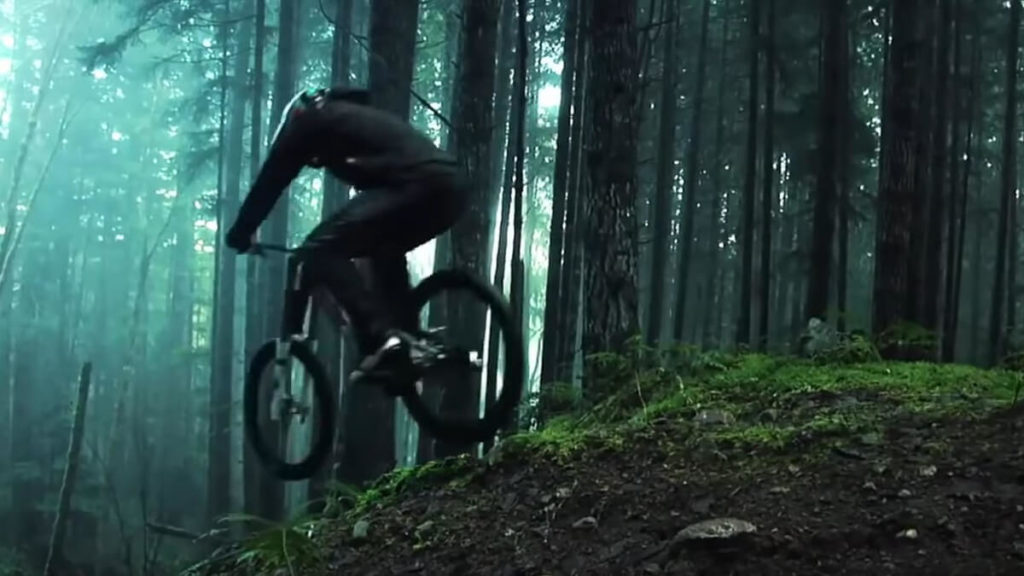Off-road bicycle riding is illegal in many national forests. Even if a specific national forest has not banned off-road or off-trail use of bicycles, there are still federal regulations that apply to all forests that make it difficult to do so legally.

Is Off-Road Bicycle Riding Legal in National Forests?
The prohibition of off-road or off-trail bicycle use is left for each specific national forest or grassland to decide. Many forests and grasslands have already issued “forest orders” requiring bicyclists to remain on roads and trails. If the specific forest or grassland you are interested in has not yet banned bicycles off-road or off-trail, then you still have to respect the few national regulations that the USFS has adopted.
Visit the USFS website to find the specific forest or grassland you are interested in.
Generally speaking, it may be legal to ride your bicycle off-road in a national forest as long as the forest you plan to ride in has not already banned off-road bicycling, and as long as you are careful to abide by the national regulations…
National Regulations that Affect Off-Road Bicycle Use
The follow sub-sections discuss actual regulations that affect the off-road use of bicycles…
U.S. Forest Service Bans Destruction of Land, Wildlife, and Plants
The U.S. Forest Service has adopted some rules concerning off-road use of vehicles that apply to all USFS lands…
It is prohibited to operate any vehicle off National Forest System, State or County roads: (a) Without a valid license as required by State law, (b) Without an operable braking system, (c) From one-half hour after sunset to one-half hour before sunrise unless equipped with working head and tail lights, (d) In violation of any applicable noise emission standard established by any Federal or State agency, (e) While under the influence of alcohol or other drug; (f) Creating excessive or unusual smoke; (g) Carelessly, recklessly, or without regard for the safety of any person, or in a manner that endangers, or is likely to endanger, any person or property, (h) In a manner which damages or unreasonably disturbs the land, wildlife, or vegetative resources, (i) In violation of State law established for vehicles used off roads.
CFR Title 36 § 261.15
- Rule (h) highlighted above is what prohibits most off-road vehicle use in national forests. Leaving tire tracks in the dirt or crust may be okay as long as it’s just a single solitary bicycle rider. But bringing a group of riders may cause enough to damage to land, plants, and animal habits to draw the attention of a forest ranger.
- You must still contact the specific national forest or grassland you plan to visit to make sure they haven’t adopted additional “forest orders”.
- Any state laws concerning use of vehicles off-road apply to USFS lands.
- Keep in mind that the USFS defines “vehicle” as any kind of device, motorized or not, used to transport persons or property. (see defintion… CFR Title 36 § 261.2)
U.S. Forest Service Bans Destruction of Property and Endangered Species
The USFS adopted additional rules that bans you from destroying any property or natural features, in any situation, including endangered species…
The following are prohibited: (a) Damaging any natural feature or other property of the United States, (c) Damaging any plant that is classified as a threatened, endangered, sensitive, rare, or unique species.
CFR Title 36 § 261.9
- As long as you’re careful about where you are riding, making sure to minimize damage to natural features, plants, and animal habitats, it’s unlikely you’ll draw the attention of forest rangers.
Bicycles Are Completely Banned in Wilderness Areas
Wilderness is a legal term defined under the Wilderness Act of 1964. The U.S. Forest Service holds wilderness property in just about every national forest, including some national grasslands.
All vehicles, motorized or not, including bicycles, are completely banned from entering lands protected as “wilderness”…
The following are prohibited in a National Forest Wilderness: (a) Possessing or using a motor vehicle, motorboat or motorized equipment except as authorized by Federal Law or regulation, (b) Possessing or using a hang glider or bicycle, (c) Landing of aircraft, or dropping or picking up of any material, supplies, or person by means of aircraft, including a helicopter.
CFR Title 36 § 261.18
- Wilderness areas are intended for hikers and horseback riders only.
- The boundaries of a wilderness area are usually posted by a sign along each road and trail. However, if you are riding off-road or off-trail, then you will not know if you have entered wilderness.
- Each national forest and grassland website will publish a list of their wilderness areas and locations.
- A map of all USFS wilderness lands can be found on our boondocking map as areas shaded in green with faint-diagonal lines.

